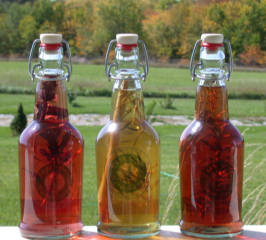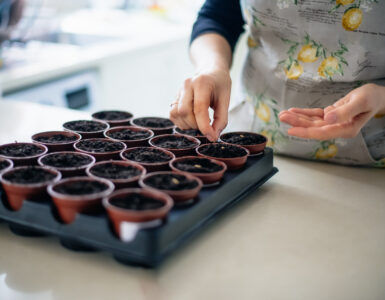Peggi Whiting with Dan’s Foods shares some of her favorite ways to cook with fresh herbs.
______________________________________________________________
• Great way to add flavor without adding any fat or calories
• Leaves should be cut very fine-the more cut surface, the more flavor is released
• Fresh herbs have a delicate flavor. Prolonged cooking will cause the herbs to loose their flavor. Add chopped herbs to cooked dishes in the last 45 minutes of cooking. For cold dishes, like dips and dressings, add herbs several hours before you’re serving to allow more of the flavor to transfer.
• Fresh herbs can be substituted for dried herbs in any of your favorite recipes. The general rule is 3 teaspoons chopped fresh herbs will be used instead of 1 teaspoon dried herbs.
• Fresh herbs can be added to your favorite bread or biscuit recipe. Herbal cornbread is also wonderful. The general rule is to use 1-2 tablespoons of chopped fresh herbs per loaf of bread. Add up to 1 tablespoon to 2 cups of flour. Savory pancakes and waffles are also a great treat.
• A great way to become familiarized with the flavor of a new herb is to make herb butter. Add 1 Tablespoon finely chopped herbs to ½ cup butter, cream cheese, cottage cheese, or low-fat yogurt.
STORING FRESH HERBS
If your herbs are on stems, snip off the ends of the stems on the diagonal. Place in a tall glass with an inch of water, like cut flowers. Cover them loosely with a plastic bag to allow for air circulation. Keep in the refrigerator, and change water daily.
Loose leave herbs are best kept in perforated bags in the refrigerator. Some moisture is good for fresh herbs. Too much moisture promotes decay. Shake them as dry as possible before storing. Crumple a paper towel and put it in the bag under the herbs to absorb extra water.
WHAT TO DO WITH LEFT OVER HERBS
If you have left over fresh herbs that you do not have plans for- a great way to save them for later use is to freeze them. Chop herbs and place into your ice cube tray, filling each cube with herbs half way. Fill with cool water and freeze. Once frozen, remove from tray and keep in a plastic bag. Cubes can be added to soups and dishes at the end of cooking for a great added flavor.
MAKING HERB VINEGARS
Herb vinegars keep indefinitely, and can be used for salad dressings, cooking and meat marinades.
Quick, Boiled method: Bring crushed or chopped herbs and vinegar to a boil, turn heat down and simmer for 20 minutes. Strain, pour into a clean bottle and serve. Add fresh herb leaves or sprigs for appearance.
Heat and Age Vinegar: Heat vinegar without boiling. Pour it into a glass jar of fresh herbs. Use 3 leaves, 1 sprig, 1 clove, or 1 chile for each cup of vinegar. Let it cool, then cover and store for a couple of weeks, shaking occasionally. It will remain good for a year. Here are some suggestions for herb vinegars to try.
Cider Vinegar
Chiles
Garlic
Oregano
Red Wine Vinegar
Parsley
Sage
Shallots
Rice Vinegar
Cilantro
Garlic
White Vinegar
Garlic
Orange Peel
Rosemary
Raisins
White Vinegar
Burnet
Dill Weed
Shallot
Rice Vinegar
Cilantro
Garlic
White Vinegar
Cardamom
Honey
Mint
Strawberry Smoothie
1 cup unsweetened frozen or fresh strawberries
1 teaspoon coarsely chopped mint leaves
1/2 cup 100% orange juice
1/2 cup low-fat vanilla yogurt
_______________________________________________________
For more information, feel free to ask the Produce Manager at your local Dan’s Foods or any Associated Foods store.















Add comment